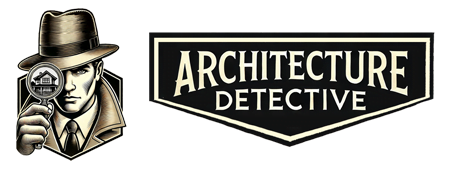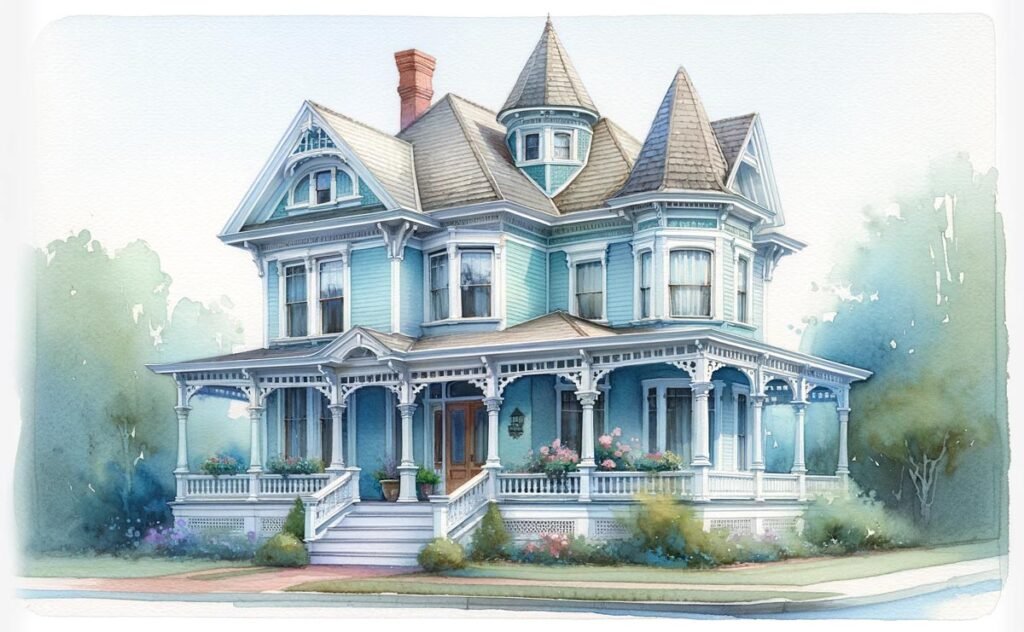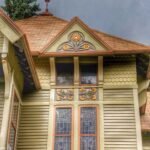The Birth of a Style
Key Features of Victorian Architecture
Victorian architecture is not a singular style but a collection of various design motifs. It encompasses aspects of Richardsonian Romanesque, Second Empire, Queen Anne, and Stick-Eastlake styles, each with its distinct characteristics. Nonetheless, there are some telltale signs to look for when classifying Victorian architecture.
- Ornate Detailing: One of the most striking features of Victorian homes is their intricate ornamentation. Gables, rooflines, and windows are often adorned with elaborate wooden or iron trim, known as gingerbread trim.
- Asymmetrical Shapes: Victorian buildings typically have irregular, asymmetrical shapes. Unlike the balanced facades of earlier periods, Victorian homes often feature bay windows, multiple stories, and protruding wings.
- Vibrant Colors: Victorians weren’t afraid of color. While earlier architectural styles favored more subdued hues, Victorian buildings often feature bold, bright color schemes, making them stand out.
- Textured Walls: Texture plays a significant role in Victorian architecture. Patterned brickwork, scalloped shingles, and carved woodwork are common, adding depth and dimension to the exteriors.
- Towers and Turrets: Many Victorian homes feature distinctive towers or turrets, contributing to their fairy-tale appearance. These elements often served as observatories or simply as decorative features.
- Stained Glass Windows: Stained glass is another hallmark of Victorian design. These colorful windows added a touch of beauty and privacy to Victorian homes.
- High Ceilings and Elaborate Interiors: Inside, Victorian homes are just as impressive, with high ceilings, ornate staircases, and detailed woodwork. It’s common to find an abundance of fireplaces, often with intricately designed mantels.
- Complex Roof Forms: Victorian architecture is renowned for its complex and varied roof designs. These roofs often feature multiple gables, steep pitches, and unique shapes, contributing to the overall ornate appearance of the structure. They may include elements like dormers, which are windows projecting from the roof, and decorative ridges, enhancing the building’s visual interest and character.
- Porches and Outdoor Living Spaces: Porches are a significant aspect of Victorian homes, with the wrap-around porch being particularly iconic. These porches not only extend the living space but also serve as a transitional area between the indoors and outdoors. Other types of porches, such as screened or enclosed porches, add functionality and charm to these historic homes.
The Legacy of Victorian Architecture
Preserving the Past
Embracing Victorian Style in Modern Homes
Even if you don’t live in a Victorian house, you can still incorporate elements of Victorian style into your home. Think about adding ornate furniture, patterned wallpapers, and rich colors to bring a touch of Victorian elegance into your space.
Victorian architecture is more than just a style; it’s a story of an era full of innovation and artistic expression. Whether you’re an architecture enthusiast or simply appreciate historical beauty, the Victorian era offers a fascinating glimpse into the past.






